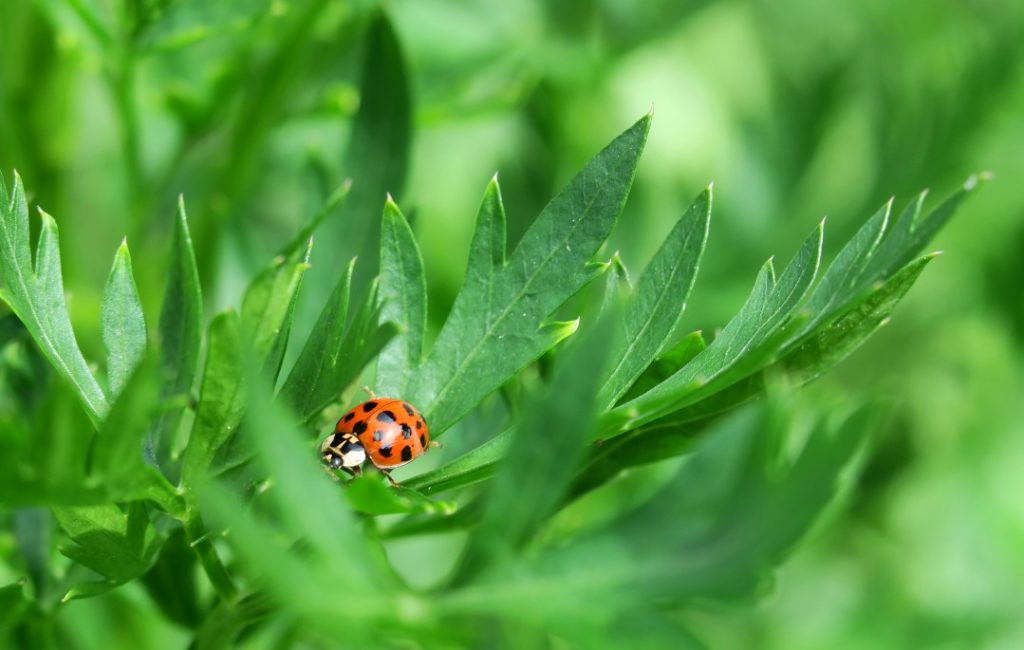Bees, ladybugs, and other pollinators–the perpetuators of life–create the plethora of produce that nourishes, sustains, and makes life taste good! Seventy of the top 100 foods we eat are pollinated by bees. Without pollinators, no stone fruit-peaches, plums, and cherries, no garlic, no cabbage, no blueberries, no strawberries, no watermelon, no zucchini, no pumpkins, the list goes on–imagine such a summer. Our eyes feast on the color. Our taste buds salivate with the meals adorned by pollination.
My first pollination memory is Grandpa tending bees behind the big barn, a target for electrical storms, on my grandparents 90-acres spread across the Niagara Escarpment’s two levels. Grandpa donned his khaki shirt, the safari mesh-faced hat and thick, long, white gloves. I never joined Grandpa on the beehive adventure, but Aunt Lou remembers Grandpa gently brushing the bees off the trays checking the comb. For Grandpa managing hives was a hobby, a curiosity, not a necessity. Even so, I conjure, he connected with the cycle of life–the cycle of food.

Cycle of Food
Annually, in late winter, I sow a few seeds inside–expecting basil, snap peas, and tomato starts to grow. Dropping a few pinhead sized seeds into friable, fertile soil and expecting growth into luscious nutritious food is an act of faith, perseverance and luck. When planting a radish seed in soil, a radish always emerges–it is never a carrot. Thankfully, I am not dependent on my gardening skills for the food I eat.
I pick my seed packets from locally grown seed companies deliberately–cultivars that flourish in my micro-climate. How does the seed get into the packet?
Evolution of Seed
Seed growing is a business–an important avocation to ensure the kernels of life are available to grow food.
In October 2020, I walked a 240-acre farm hidden in Snohomish County’s uplands away from the bustling metropolis, outside suburbia. The prime growing season had just ended, before the onset of the Pacific Northwest’s dank and dark weather. Farmers were eking out the last few days of harvest income from the COVID-induced, socially-distanced pumpkin festivals. Tucked in one corner of this expansive Western Washington farm is an isolated 20-acre field. The field is surrounded by trees with a small trickling creek ravine on its western edge. Stacked beehives basking in the sun graced the edge of the northern treeline. Spinach leaves–large leaf and deep green–covered the ground in a random pattern. My guide said, “This field grew seed this summer.”
My seed saving knowledge being limited to harvesting marigold seeds as a kid was whetted. I called my farmer friend, Nash Huber of Nash’s Organics, who many years ago on a farm tour in Dungeness, Washington, spoke of his seed growing operation. “Field isolation and a minimum of four to five miles from another seed growing operation is critical to getting uncontaminated seed,” explained Nash. “Spinach seed is heavy and wind pollinated. Cauliflower, broccoli, or other brassicas are bee pollinated. Spinach and a brassica seed crop can be grown at the same time on the same field.” I only saw spinach “volunteers,” but didn’t even know to look for another “volunteer crop.”
Nash, with 50 years of farming experience, continued, “The last 20 years the seed growing industry has consolidated into five major corporations with Monsanto the largest.” Monsanto owns a quarter of the worldwide seed production with Dow, Dupont, Bayer and Syngenta controlling the rest of the seed markets. Even with seed production being so concentrated, it creates opportunity. “There is a lot room at the bottom for smaller, regional seed companies to thrive, prosper and grow seed for local micro-climates,” Nash said. This season, Nash has three contracts with smaller companies to grow seed on his north Olympic Peninsula farm.

Spinach, lettuce, brassicas–kale, cauliflower–thrive in cool temperatures. Farm ground in the rain shadow of the Olympic Mountains, adjacent to the Puget Sound are the optimal micro-climate for growing food products that thrive in our cool maritime climate. With average daily temperatures below 70 degrees Fahrenheit, dry summer conditions, and lots of hours of sunlight, these cool weather seed crops flourish near Sequim and in Skagit and Snohomish Counties. With an isolated agricultural field, surrounded by trees, optimal seed growing conditions exist where pollen drift and bee movement are contained.
Ensuring a long term, stable food supply requires robust protection of places to grow seed. Thankfully, there are farmers and farmland growing our future food security. As an eater, buying locally grown produce and seeds are my cog to this cycle of life.

